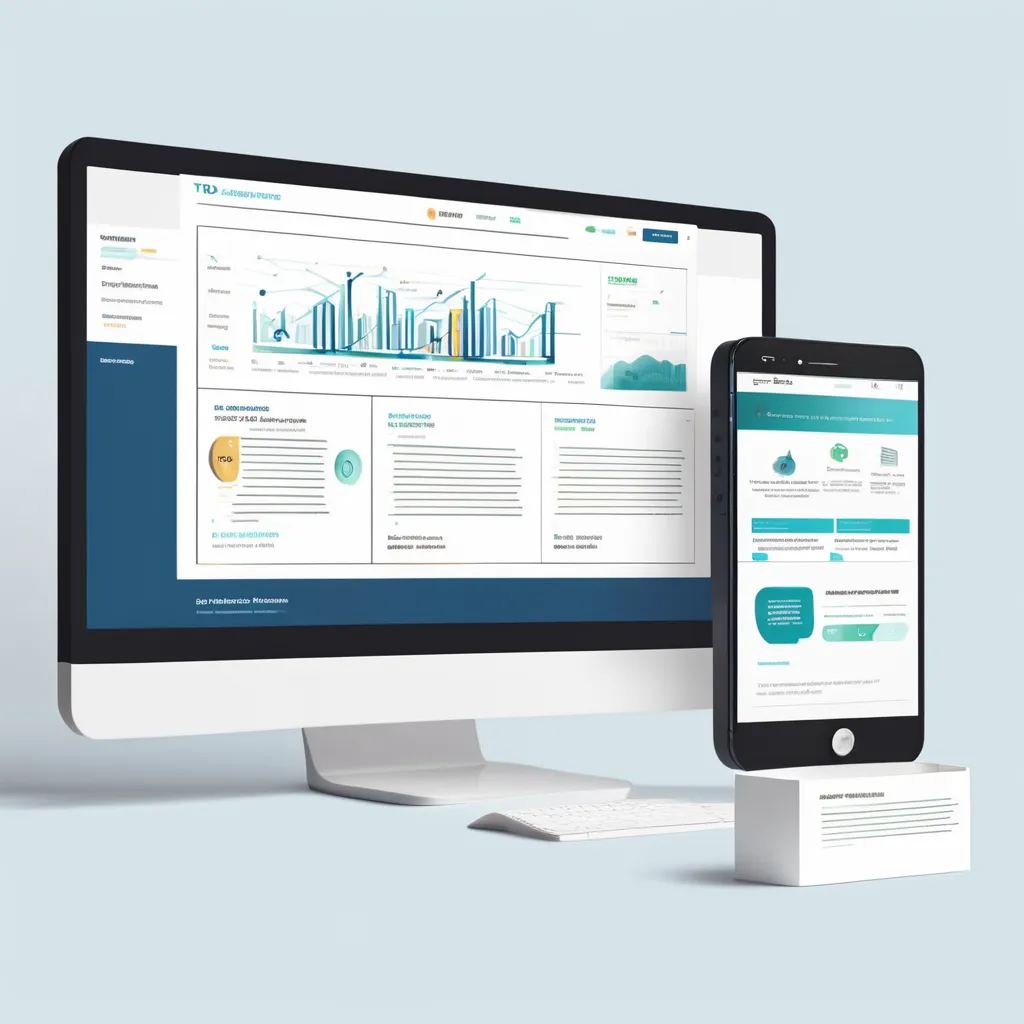How to Optimize Web Design for SEO
Contents [hide]
- 1 How to Optimize Web Design for SEO
- 1.1 Introduction
- 1.2 Essential Elements for an SEO-Friendly Website Design
- 1.3 Technical SEO Factors in Web Design
- 1.4
- 1.5
- 1.6
- 1.7 Content Optimization for SEO-Friendly Web Design
- 1.8 Design Aspects That Boost SEO
- 1.9 Building Credibility and Trust Through SEO Web Design
- 1.10 FAQs: How to Optimize Web Design for SEO
- 1.11 Conclusion
Introduction
Did you know that over 60% of all online experiences start with a search engine? This means that if your website isn’t optimized for search engines, you could be missing out on a lot of potential traffic. But it’s not just about cramming your site with keywords or creating endless backlinks. Combining SEO with effective web design is a crucial strategy to boost visibility, improve user experience, and enhance brand credibility. By seamlessly integrating SEO elements into your website’s design, you can help both users and search engines navigate and appreciate your site. Let’s explore how to optimize web design for SEO to ensure your site ranks high and stands out.
Essential Elements for an SEO-Friendly Website Design
Importance of Clear Site Structure
A well-structured site makes it easier for both users and search engines to understand and navigate your content. When your site has a logical structure, users are more likely to stay longer, reducing bounce rates and boosting SEO. Additionally, a clear structure helps search engines crawl and index your content efficiently, leading to better rankings.
Using Breadcrumbs Effectively
Breadcrumb navigation is a secondary navigation system that shows users their location within the site’s hierarchy. This feature not only improves the user experience but also enhances SEO by providing internal links and creating a clear path for search engines to follow.
Mobile Optimization
Responsive Design Techniques
In today’s world, over half of web traffic comes from mobile devices. Using responsive design techniques ensures that your site looks and functions well across all devices, from desktops to smartphones. Responsive design is a core component of mobile optimization and helps deliver a consistent experience to users, no matter how they access your site.
Impact on Google’s Rankings
Google uses a mobile-first indexing approach, meaning the mobile version of your site is considered the primary version for ranking. Ensuring that your site is fully optimized for mobile can significantly impact your SEO performance. Elements like font size, spacing, and button placement should be adapted for mobile users to ensure a smooth experience.
URL and Meta Tag Optimization
Optimizing URL Structures for Web Design for SEO
The URL is often the first thing both users and search engines see. It should be concise, descriptive, and include relevant keywords. An effective URL structure not only enhances Web Design for SEO but also makes it easier for users to understand what the page is about.
Crafting Effective Meta Tags
Meta tags, such as title tags and meta descriptions, play a crucial role in click-through rates and visibility. An optimized meta description should include primary keywords and provide a compelling reason for users to click. Similarly, title tags should be clear, include target keywords, and stay within the recommended character limits for maximum impact.
Technical SEO Factors in Web Design
Improving Page Loading Speed
Compressing Images and Minifying Scripts
Page speed is a major ranking factor. To optimize your site’s speed, focus on compressing images and minimizing scripts. Using tools like ImageOptim or TinyPNG can help reduce file sizes without losing quality, while tools like Minify can help compress CSS, HTML, and JavaScript files.
Leveraging Browser Caching
Browser caching allows frequently accessed resources to be stored locally, reducing load times for returning visitors. Implementing caching strategies can significantly improve your website speed, enhancing both the user experience and your search rankings.
Crawlability and Indexability
XML Sitemaps and Robots.txt Files
XML sitemaps help search engines understand your site’s structure and find all the pages that need indexing. Similarly, a properly configured robots.txt file can guide search engines on which parts of your site to crawl and which to avoid. Together, these tools ensure your site’s content is easily discoverable by search engines.
Avoiding Common Crawl Errors
Common crawl errors, like 404s or server issues, can hurt your SEO. Regularly monitor your site for errors using tools like Google Search Console and fix them promptly to maintain your site’s visibility.

Web Design for SEO
Content Optimization for SEO-Friendly Web Design
Creating High-Quality Content
Content Relevance and Readability
Content is still king when it comes to SEO. Ensure your content is relevant, engaging, and easy to read. Use keywords strategically, but avoid keyword stuffing. Break up long paragraphs and use headings and bullet points to make the content scannable.
Using Structured Data and Schema Markup
Structured data helps search engines understand your content better, resulting in enhanced SERP features like rich snippets. Implementing schema markup for products, reviews, and FAQs can help your content stand out and attract more clicks.
Internal Linking Strategies
Using Topic Clusters for Content Organization
Organizing your content into topic clusters makes it easier for users and search engines to navigate. Topic clusters involve creating a pillar page that covers a broad topic and linking it to various related content pieces. This strategy not only improves navigation but also boosts keyword rankings.
Best Practices for Anchor Text
Anchor text should be descriptive and relevant to the linked content. Avoid using generic terms like “click here.” Instead, use keywords that tell users and search engines what the linked page is about, enhancing both SEO and user experience.
Design Aspects That Boost SEO
Visual and User Interface Design
Above-the-Fold Optimization
The “above-the-fold” area is the section of your website visible without scrolling. Make sure this space is used effectively by placing key content and calls-to-action (CTAs) here to engage visitors instantly.
Page Layout and White Space
A clean, well-organized layout with adequate white space can keep users engaged longer. White space makes content easier to read and helps highlight important elements, reducing bounce rates and boosting engagement.
Media and Image Optimization
Using Alt Text for SEO
Alt text provides a textual description of images, helping search engines understand the content of the image. Use clear, descriptive alt text that includes relevant keywords to ensure your images contribute to SEO.
Image Compression and Load Time
Large images can slow down your site. Use image compression tools like TinyPNG or ImageOptim to reduce file sizes without sacrificing quality. A faster site improves user experience and search rankings.
Building Credibility and Trust Through SEO Web Design
Using Trust Signals
SSL Certificates and HTTPS Protocol
Security is a key trust signal for users and search engines alike. Implementing HTTPS ensures a secure connection, which Google considers a ranking factor. Users are more likely to trust and engage with a site that shows it’s secure.
Social Proof and Testimonials
Social proof, like reviews and testimonials, can build credibility and improve conversions. Highlighting these elements on your site can also signal to search engines that your site is trustworthy and valuable.
Maintaining a Consistent Brand Identity
Impact of Consistent Design Elements
Consistency in design, such as using the same colors, fonts, and logos across your site, helps build brand recognition. It also signals to search engines that your site is cohesive, which can support your SEO efforts.
FAQs: How to Optimize Web Design for SEO
- What is the role of internal linking in SEO? Internal linking helps distribute link equity across your site and guides users to relevant content, improving site structure and SEO.
- How does site structure affect SEO? A clear site structure helps search engines understand your content and makes it easier for users to navigate, boosting both SEO and user experience.
- What are the best practices for mobile optimization? Use responsive design, optimize images for mobile, and ensure text is legible on small screens.
- How can page speed influence SEO? Page speed affects user experience and is a key ranking factor. A slow site can lead to high bounce rates and lower rankings.
- Why is SSL certification important for SEO? SSL certification enhances security, which Google values, and helps protect user data, making it a crucial SEO factor.
Conclusion
Optimizing your web design for SEO is about more than just technical tweaks—it’s about creating a site that provides a seamless experience for both users and search engines. By focusing on site structure, mobile optimization, URL and meta tag best practices, and high-quality content, you can build a site that not only ranks well but also engages and retains users. Implement these strategies today to see your website’s visibility and performance improve significantly.
Recommended Links
- Ahrefs – SEO Best Practices Guide
- Semrush – Optimizing Web Design for SEO
- Backlinko – Ways to Improve SEO Rankings

